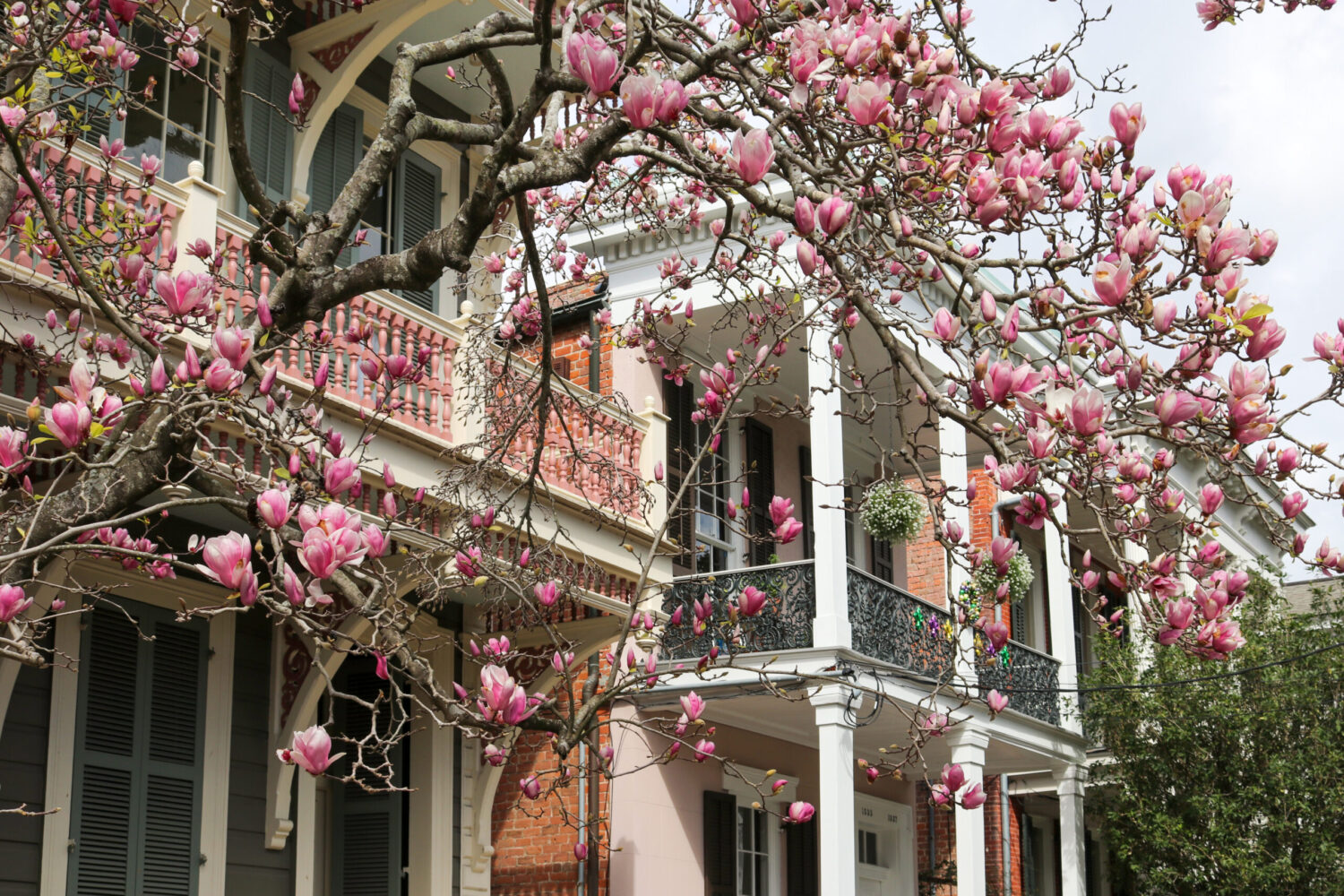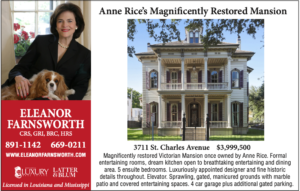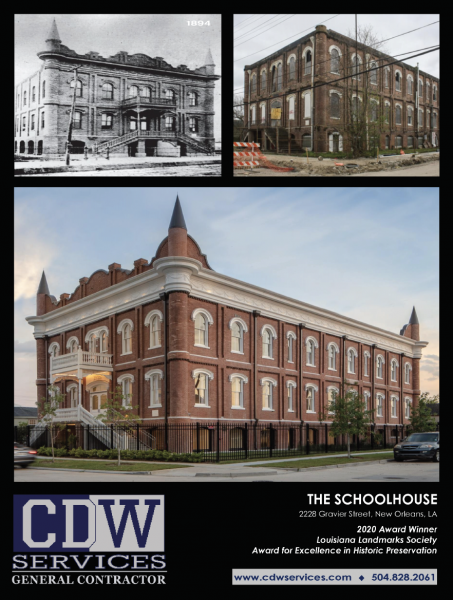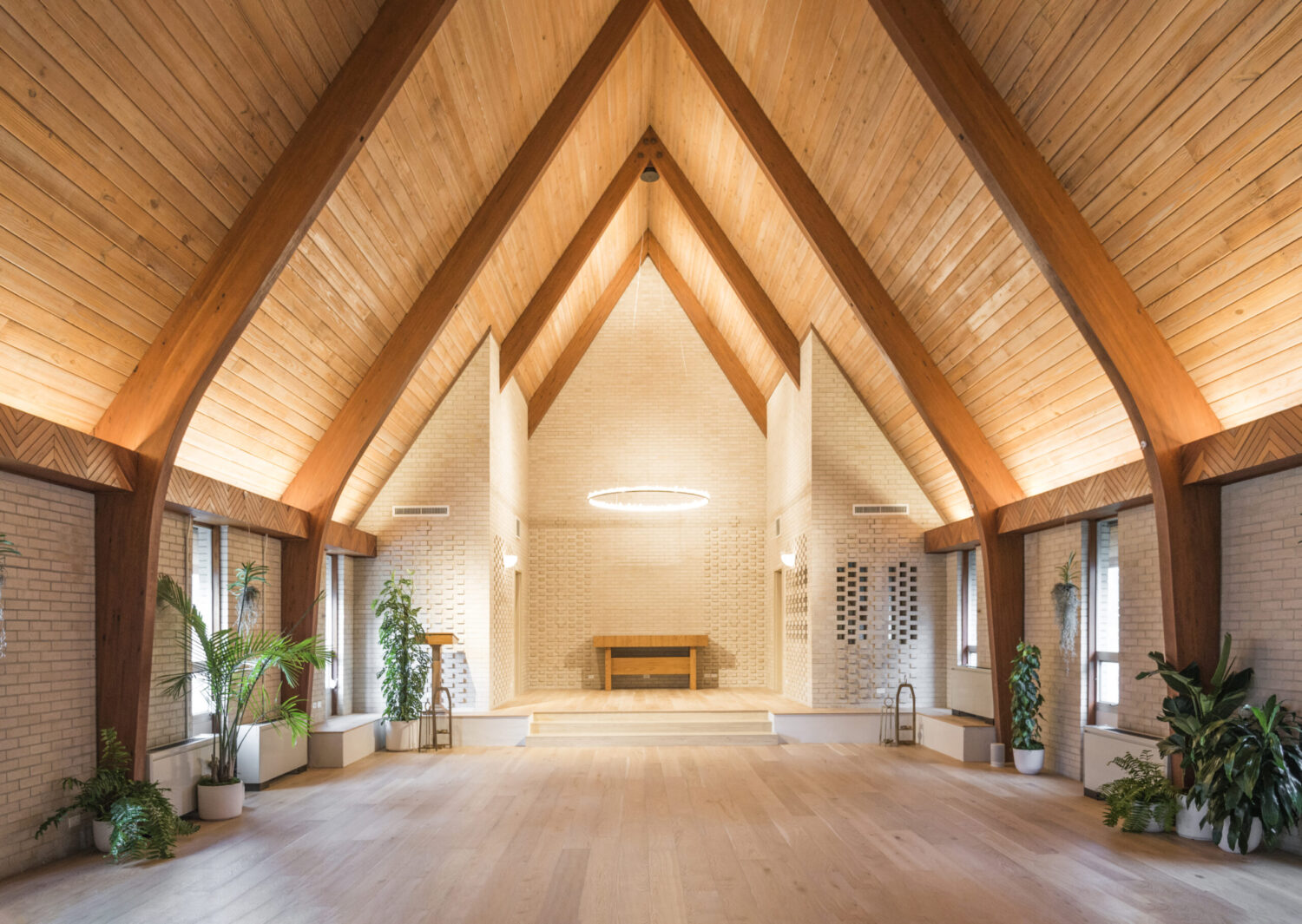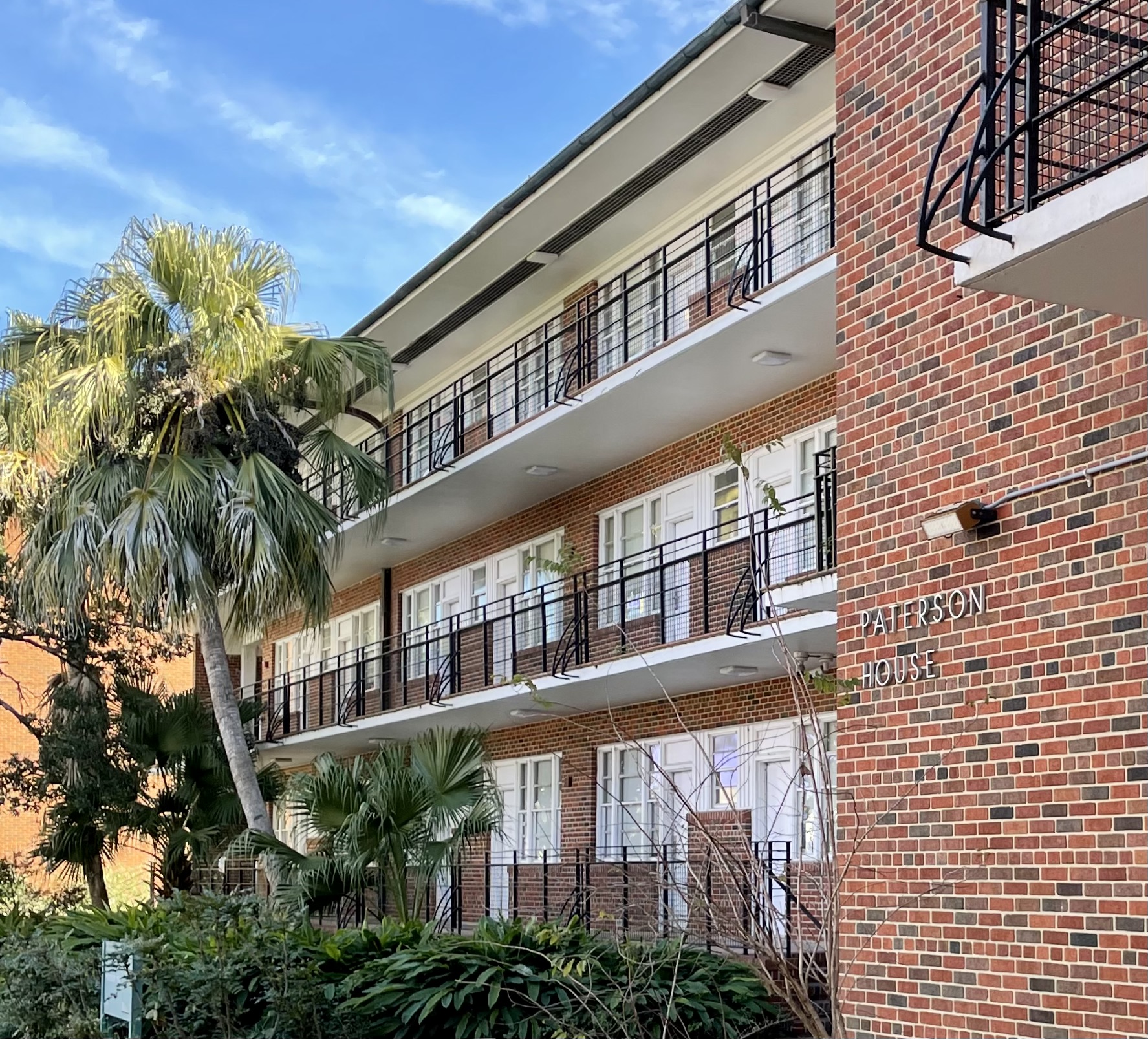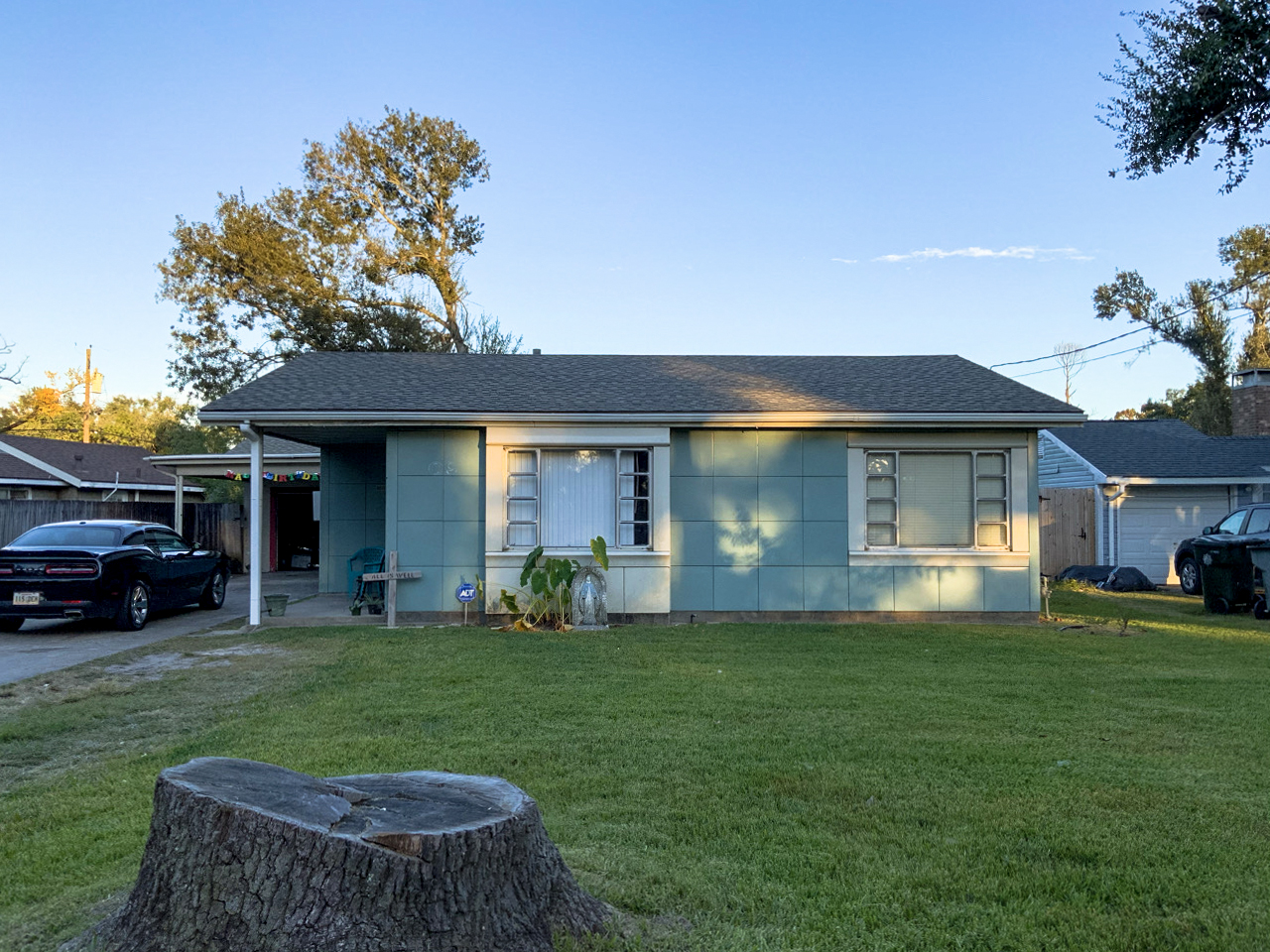This story appeared in the March issue of PRC’s Preservation in Print magazine. Interested in getting more preservation stories like this delivered to your door nine times a year? Become a member of the PRC for a subscription!
The renovation of the former Norwegian Seamen’s Church into the new Spyre Center is just one of the preservation projects renewing and revitalizing the Lower Garden District. Along the historic neighborhood’s bustling commercial corridors and quieter residential roads, buildings from the 19th and 20th centuries form a mosaic of architectural types and styles. Newer residential and commercial buildings also continue to add variation to the mix as formerly vacant lots are redeveloped for urban infill projects.
The neighborhood was first laid out in 1807 by Barthelemy Lafon, and it was “one of the earliest expressions of the Greek Revival to appear in New Orleans,” according to noted architect Samuel Wilson, Jr. Many of its streets still bear the names of mythological Greek muses. Much of the neighborhood’s 19th-century building stock still shines today thanks to the restoration efforts of local preservationists and programs of the Preservation Resource Center during the late-20th century. The neighborhood was added to the National Register of Historic Places in 1974, and it was one of the first local historic districts protected by the New Orleans Historic District Landmarks Commission when it was designated in 1975. The boundaries for the National Register historic district and the local HDLC district differ.
Today, as the city recovers from the economic effects of the pandemic, the Lower Garden District’s walkable mix of historic residential and commercial corridors continues to be a guiding light for the neighborhood as local businesses — including longtime favorites and trendy new hot spots — are bouncing back.
Advertisement
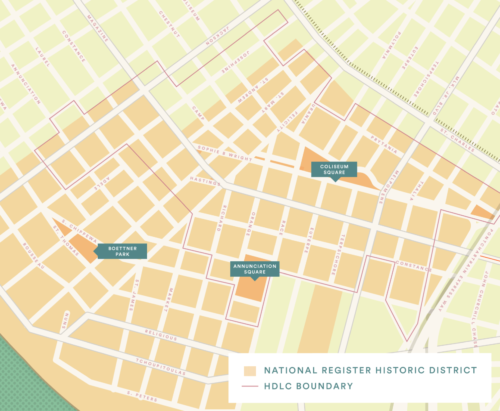 Grace King House, built 1847
Grace King House, built 1847
1749 COLISEUM ST.
Impressive home with both Greek Ionic and Corinthian columns gracing its front, it is named for the Louisiana historian and author who lived here from 1905 to 1932.
St. Alphonsus Art & Cultural Center, built 1855
2029 CONSTANCE ST.
This stunning Italianate former church, a National Historic Landmark, has frescoes by Italian painter Dominique Canova and impressive statuary within.
St. Mary’s Assumption Church, built 1858
923 JOSEPHINE ST.
This church, built for a German congregation, is still active.
Kingsley House, built 1896
1600 CONSTANCE ST.
The oldest settlement house in the South.
Former Shaaraei Fifilah Synagogue, built 1857
709 JACKSON AVE.
Now apartments, this building was the second synagogue built in New Orleans.
McKendrick House, built 1865
1474 MAGAZINE ST.
A fine example of the Lower Garden District’s Greek Revival residential architecture.
St. Theresa of Avila Catholic Church, built 1848
1404 ERATO ST.
This Gothic Revival-style church is still an active congregation today, and it has an impressive collection of stained-glass windows and one of the oldest pipe organs in Louisiana.
In the November 2020 issue of Preservation in Print, PRC staff reported on the pandemic’s impacts on local retailers along Magazine Street, the commercial backbone of the Lower Garden District. The past two years have brought many challenges to New Orleans’ small businesses; with multiple hurricanes, new waves of Covid-19 variants, supply chain shortages and inflation all bringing major hurdles to the local economy. Many businesses in New Orleans have permanently shuttered as a result, but other longtime establishments have continued to survive despite the challenges, while other entrepreneurs are bringing new local businesses to the city’s historic neighborhoods.
In the Lower Garden District — a diverse cross-section of the city linking the Central Business District to residential and commercial areas further Uptown — these new happenings are especially evident, with new activity and new businesses blossoming among the historic commercial core. On a sunny weekday in February, the neighborhood’s streets and sidewalks were teeming with activity as locals and visitors alike took in its retail, restaurant and coffee shop scene.
Here’s a closer look at some of the recent happenings in the historic neighborhood since 2020.
Advertisement
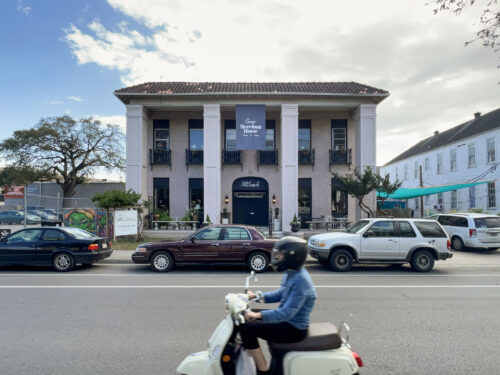 Briede Building, 1152 CAMP ST.
Briede Building, 1152 CAMP ST.
Built as the Albert E. Briede & Son funeral home in 1928, this stucco and red tile building was formerly the home of residential treatment program Bridge House, which closed its doors on Camp Street in 2019 and consolidated to a larger location on Earhart Boulevard. After a round of renovations for its new retail use, the building is currently the temporary home of Merchant House, a collective of several New Orleans-based merchants whose wares include antique furniture, vintage clothing, art, plants, housewares and gifts.
Attached to the side of the building is a former warehouse space now home to Courtyard Brewery, which moved from its previous location on Erato Street in 2020. Its large courtyard has become a popular outdoor gathering spot during the pandemic, and frequently hosts local pop-up restaurants and occasional outdoor markets for local vendors. Also located inside the brewery is Rahm Haus Ice Cream, which makes unique small-batch ice creams, pretzels and German-inspired bites.
While Merchant House conducts business from its temporary home on Camp Street, its original location around the block at 1150 Magazine St. is undergoing a facelift to make upgrades to the existing warehouse building. A renovation and expansion into an adjacent warehouse also are planned to make room for new retail tenants. That building’s renovation is designed by Bell Butler Design and Architecture, the same group behind the renovation of the Spyre Center.
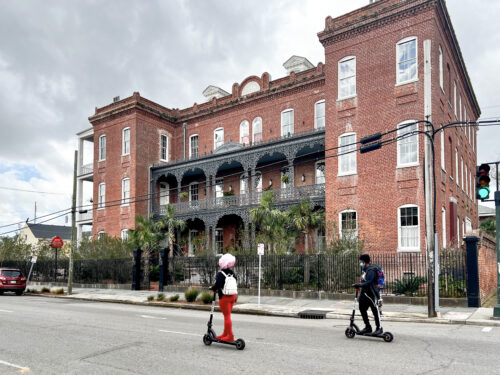 Hotel St. Vincent, 1507 MAGAZINE ST.
Hotel St. Vincent, 1507 MAGAZINE ST.
After extensive renovations, Hotel St. Vincent opened its doors in the summer of 2021. The boutique hotel is the creation of New Orleans-based Kupperman Companies, whose other projects include the Drifter Hotel, Joy Theater, Catahoula Hotel and others.
The impressive Italianate-style building was constructed in 1864 as the St Vincent’s Infant Asylum and has a red brick facade with arched windows, ornate cast-iron galleries and a dentilled cornice. In addition to 75 hotel rooms, the site also has two new restaurants open to the public: upscale Italian restaurant San Lorenzo, and French-Vietnamese cafe and bakery Elizabeth Street Café.
New eateries in historic buildings
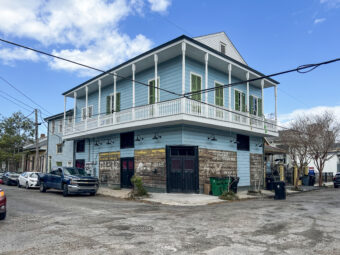 Lengua Madre, 1245 CONSTANCE ST.
Lengua Madre, 1245 CONSTANCE ST.
A modern Mexican restaurant by Chef Ana Castro, Lengua Madre opened in 2021 after former restaurant Thalia closed its doors at this location. The building is a two-story corner storehouse with first-floor commercial and second-floor residential space, dating to the late-19th century. Faded ghost signs and vintage advertisements from its past life as a bar called The Shamrock Tavern can still be found wrapping around both sides of the building’s exterior walls, after being uncovered during a past renovation.
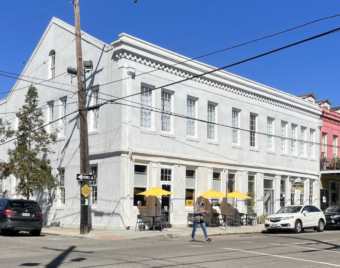 Union Ramen, 1837 MAGAZINE ST.
Union Ramen, 1837 MAGAZINE ST.
This new Japanese restaurant opened its doors at the corner of Magazine and St. Mary streets in the summer of 2020. The kitchen is run by Chef Nhat “Nate” Nguyen and has a menu highlighting Japanese noodle soups and small plates. The building was formerly home to Jim Russell’s Records, which closed in 2015, and was renovated in the following years after the building sold. The building is part of a row of Greek Revival-style masonry commercial buildings which span the length of the city block and date to the mid-19th century.
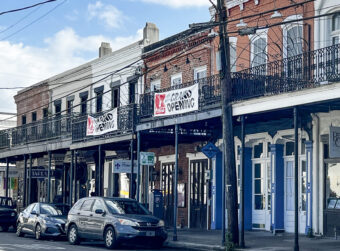 In the nearby 1900 block of Magazine Street, two-story Greek Revival and Italianate-style buildings from the mid-19th century also span the entire city block with deep galleries shading much of the sidewalk. Two new additions to this historic row of buildings include Parish Parlor (1912 Magazine St.), an ice cream parlor that opened in the fall of 2020; and Prime Nola (1910 Magazine), a bistro and oyster bar that opened in the fall of 2021.
In the nearby 1900 block of Magazine Street, two-story Greek Revival and Italianate-style buildings from the mid-19th century also span the entire city block with deep galleries shading much of the sidewalk. Two new additions to this historic row of buildings include Parish Parlor (1912 Magazine St.), an ice cream parlor that opened in the fall of 2020; and Prime Nola (1910 Magazine), a bistro and oyster bar that opened in the fall of 2021.
Advertisement
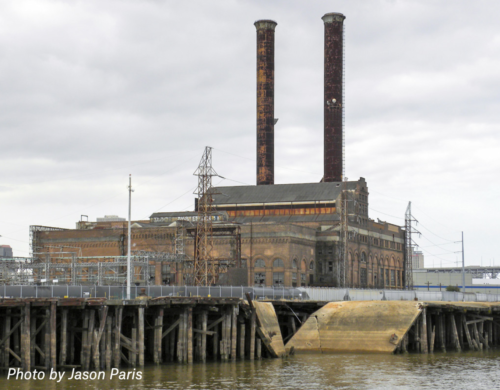 Market Street Power Plant, 1601-1643 S. PETERS ST.
Market Street Power Plant, 1601-1643 S. PETERS ST.
The smokestacks of the Market Street Power Plant tower above the Lower Garden District and can be seen for miles. The imposing structure was built in 1905 and once generated electricity for the bulk of the city. It has been out of service since 1973 and has sat vacant for decades with various redevelopment plans falling through. In February, The Times-Picayune reported that new owners — including developers Louis Lauricella and Brian Gibbs, as well as real estate investment firm Cypress Equities — purchased the building from developer Joe Jaeger, who had owned the building since 2015. The new owners plan to convert the building into a hotel, offices, retail space and an entertainment venue, The Times-Picayune reported.
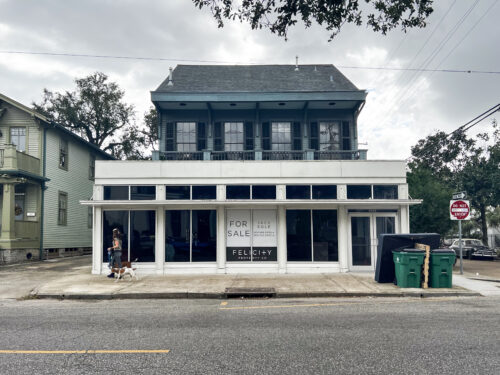 The Rabbit’s Foot, 2042 PRYTANIA ST.
The Rabbit’s Foot, 2042 PRYTANIA ST.
A new market is scheduled to open soon at the corner of Prytania and Josephine streets, inside the space formerly home to Zara’s Supermarket. “The Rabbit’s Foot will be a modern bodega,” said owner Ryan Murphy on the business’ Facebook page. “I hope it will become an essential, everyday part of life for the people of our neighborhood.” The market will include a specialty coffee program, market space for local vendors, a rotisserie and an open kitchen with quick grab-and-go service.
Davis “Dee” Allen is PRC’s Communications Associate and a staff writer for Preservation in Print.
Advertisements




